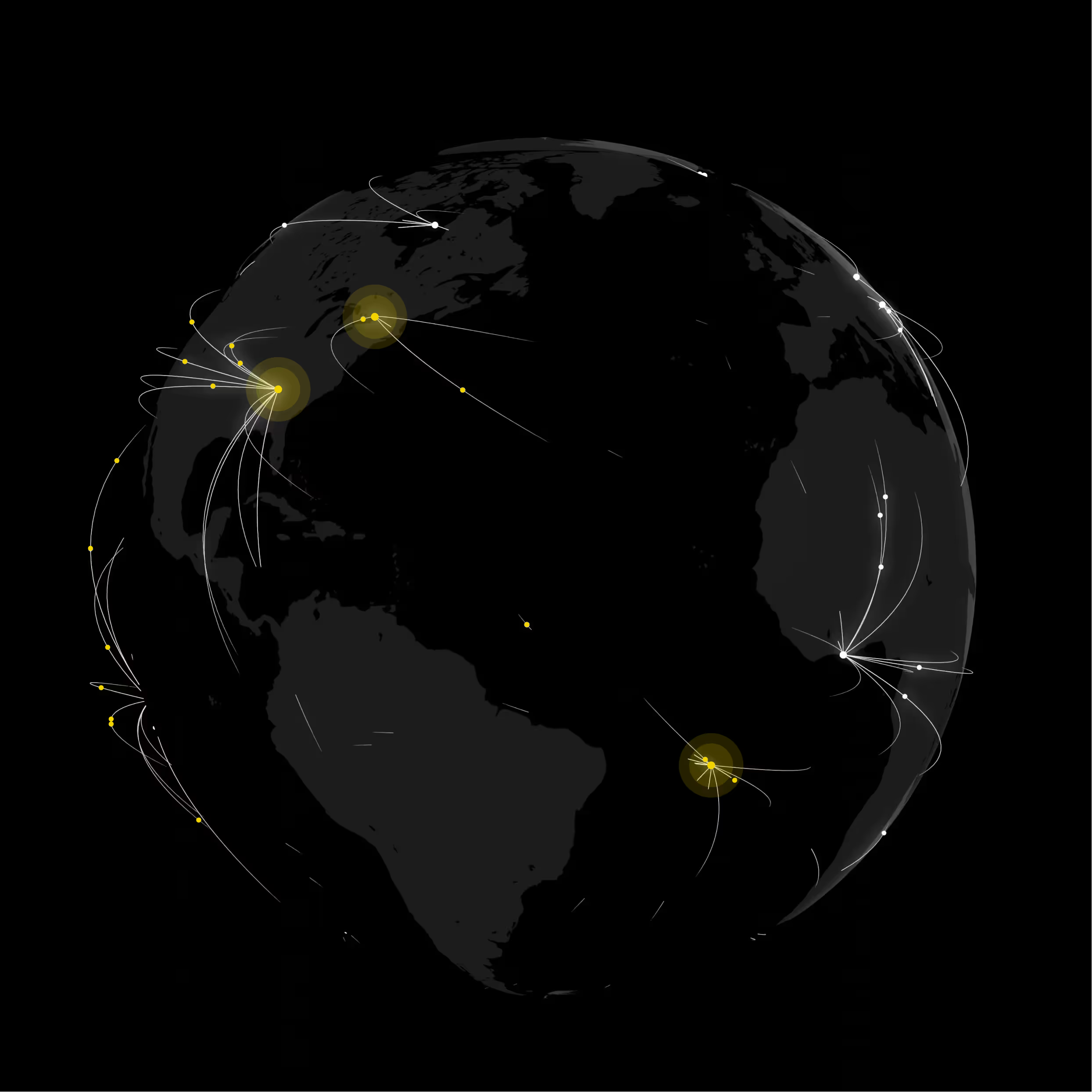Empower Your Team: Security Awareness Through Data-Driven Insights
Explore how data-driven insights strengthen corporate security and resiliency against emerging threats.
Having a comprehensive security strategy is crucial. By utilizing data-driven insights, organizations can stay one step ahead of sophisticated threats and empower their employees to become the first line of defense. Here, we explore the evolution of corporate security, the importance of executive and event safety, and how data analytics and technology play a vital role in securing global supply chains.
New Security Approach
Over the past few decades, corporate security has undergone a significant transformation. Rather than relying solely on guards, gates, and physical barriers, organizations now employ data-driven methods to identify and mitigate threats proactively.
The rise in innovative technologies, IoT devices, and the availability of threat intelligence has enabled forward-thinking security teams to adopt a data-driven approach to risk mitigation. Data aggregation, visualization, and AI capabilities have made data that would have once been impossible to work with accessible for security teams across all ranges of maturity. As more companies understand the competitive advantage that corporate security can bring, applying a data-driven approach is becoming a requirement, not just a nice to have.
Risk Management
Security leaders have adopted a more holistic risk management mindset to address these challenges that strongly emphasize data analysis and intelligence. Organizations are starting to understand the overlap in threat vectors like cyber and physical, and how better tracking of data and implementation of analytics can build resilience. Use of techniques such as data aggregation, visualization, and AI capabilities can enhance security recommendations and help implement proactive security measures efficiently and effectively.
Site Security Assessments
One of the key applications of data analytics for corporate security is performing comprehensive site security assessments. For organizations managing an extensive portfolio of locations, detailed analysis of risks for both existing sites and potential new sites is crucial. Data-driven assessments evaluate factors such as crime rates, proximity to sensitive sites, natural disaster risks, and local infrastructure.
With this intelligence, corporate security teams can make data-backed recommendations on site selection, physical security measures, access controls, and other safeguards tailored to the unique risk profile of each site. Site security assessments enable organizations to make strategic, risk-aware decisions and allocate resources efficiently.
Innovative Security Approaches
AI and machine learning have further enhanced this data-driven approach. With sophisticated algorithms, massive datasets can be parsed to identify suspicious patterns and pinpoint critical risks for human review. Technology can also be applied to identify and mitigate duplicates, anomalies, or inconsistencies to enhance the quality of the data being analyzed.
Executive Protection: Safeguarding Leaders in the New Risk Landscape
Executive protection is top of mind for security teams of all sizes and maturity. The C-suite, board, and even shareholder meetings are often an area of vulnerability and require a significant investment in security resources. As the industry evolves, there is an opportunity for EP teams to capitalize on technology advancements in order to bring new efficiencies and enhanced preparedness to the program.
Threat Monitoring and Intelligence Gathering
Threat monitoring and intelligence gathering are crucial to identifying risks and bad actors early. Potential threats can be detected faster by analyzing data from OSINT tools, social media monitoring, dark web scans, and other sources. This allows protection teams to take preventive measures before risks materialize. Data patterns can also reveal whether an executive is targeted with cyberstalking or an orchestrated smear campaign online.
Travel Planning
When planning travel, comprehensive data analysis is crucial in minimizing risks and ensuring the safety of executives. This analysis goes beyond just considering routes. It extends to various aspects of the travel experience, including the choice of hotel, planned activities such as dinners or events, the level of security detail, and the unique risk profile of each area.
Hotel Selection
Hotel selection plays a significant role in the security of executives during their travels. In-depth analysis of hotel security measures is essential to ensure that the chosen accommodation provides a safe and secure environment. This includes evaluating factors such as hotel security plans, crime and unrest risk profile, and location relative to itinerary stops. This can feel nuanced, but a few blocks can make a big difference in the cost of security detail and peace of mind.
Local Crime Patterns
Considering local crime patterns is vital for travel planning. Analyzing historical data helps security teams understand destination-specific risks, identify high-crime areas, and implement measures to minimize incidents such as theft or assault. This situational awareness allows for effective plans to ensure executives' safety, even in higher-risk locations.
Protest or Disturbances
Assessing the potential for protests or disturbances is essential in travel planning. This involves monitoring social and political dynamics in the destination, identifying any ongoing or upcoming events that may attract demonstrations, and understanding trends in the local population.
Data Visualization for Effective Communication
In an executive protection advance or any other executive security deliverable, data visualization provides a powerful tool for security teams to communicate recommendations and gain buy-in from leadership.
Interactive dashboards can showcase historical crime data, event risk heatmaps, and other insights that support suggested security measures in a visually compelling way. Rather than relying solely on written reports, data visualizations allow teams to tell a data-backed story that executives can quickly grasp and act upon.
With clear situational awareness, leadership is more likely to approve appropriate protocols while maintaining operations and visibility. Data-driven communication enables security to say "yes" more often, enact appropriate safeguards, and foster an organizational culture built on security.
Data From Past Trips
Moreover, historical data from past trips provides valuable comparative insights that can be utilized in future travel planning. By analyzing previous travel experiences, security teams can identify trends, patterns, and potential vulnerabilities that can inform risk mitigation strategies for upcoming trips. This includes understanding the specific challenges and risks associated with different locations, refining motorcade routes based on past incidents or road conditions, and adapting security protocols based on lessons learned.
To make appropriate recommendations for travel planning, it is essential to consider all the factors mentioned above. This includes providing advice on selecting secure hotels, recommending specific security measures based on the unique risk profile of each area, and suggesting appropriate security details based on the planned activities and potential risks involved.
Event Security: Managing Large Gatherings with Data-Driven Precision
Successfully securing events with thousands of attendees requires meticulous planning and data analysis. While physical barriers and screening procedures are crucial, the intelligent use of data allows event organizers to manage crowds, traffic, and potential incidents with precision.
Below are some of the best practices that companies are working to implement. While being able to execute all of these together is not wholly feasible (nor necessary), understanding how these work best can help elevate your event security.
Digital Ad Boards
One innovative approach to crowd management is the utilization of digital ad boards to advertise high-risk areas and ensure a seamless experience for event attendees. These interactive displays can be strategically placed to communicate safety precautions, highlight potential hazards, and provide real-time information to guide attendees. By leveraging data-driven insights and displaying critical information on these digital ad boards, event organizers can enhance situational awareness and help prevent overcrowding or other safety concerns.
Analytics on Past Events
Detailed analytics on past events play a vital role in planning future events. Historical data on entry queues, venue crowd density, and peak congestion times provide crucial insights for accurate staffing and logistics. This information enables event organizers to optimize security measures, from ticket checkpoints to emergency response planning. By analyzing past data, choke points can be identified and mitigated. Traffic flows can be monitored to adjust venue layouts and ingress/egress points, ensuring a smooth and efficient experience for attendees.
Real-time Data Streams
During events, real-time data streams become invaluable for rapid response. Video analytics can detect areas of overcapacity before they become unsafe, while sensors can monitor crowd noise and motion for any anomalies. By integrating data from multiple sources, event organizers can gain comprehensive situational awareness and respond proactively to potential issues.
Post-event Analysis
The post-event analysis is also instrumental in improving future security measures. Metrics such as screening times, incident response rates, and surveillance coverage are analyzed to identify areas for improvement. Feedback from both staff and attendees provides valuable insights and perceptions that can be considered and integrated into security planning. Event organizers can continuously update and adopt best practices for enhanced event security by monitoring trends across events.
Drones, AI Video Analysis, Virtual Simulations
Cutting-edge technologies further contribute to data-driven event security. Drones can provide aerial views of crowds and traffic hotspots, enhancing situational awareness. AI-powered video analysis can detect suspicious behaviors and items, allowing security personnel to respond swiftly. Virtual simulations can be utilized to model crisis scenarios, enabling event organizers to evaluate and refine their response strategies.
Global Supply Chain Security: End-to-End Visibility and Proactive Risk Management
Modern supply chains are complex webs spanning continents and involving countless providers. While this enables business efficiency and flexibility, it also introduces vulnerabilities that can lead to disruptions and losses. Data integration is critical to gaining visibility across disparate links and proactively identifying potential threats.
Onboarding Trusted Partners
Supply chain security begins with vetting and onboarding trusted partners. Rigorous processes should screen new vendors and carriers on financial health, safety records, and security protocols. Once established, ongoing monitoring is essential to ensure standards are maintained. IoT sensors and tracking devices can provide real-time status updates on shipments. Regular audits and performance reviews also help gauge dependability and risk.
Secure Data Collection
With comprehensive data collection, analytics can detect anomalies and risks early. Location pings that are off established routes, delays at unusual points, and equipment issues can trigger alerts for investigation. Data mining can also uncover patterns leading to vulnerabilities, like concentrated sourcing from a single provider. Mitigating actions can then be taken proactively before a disruption occurs.
Blockchain, AI, and Machine Learning
Emerging technologies offer new safeguards for supply chains. Blockchain establishes tamper-proof ledgers for tracking cargo location and status. It also makes paperless documentation more secure than physical forms prone to forgery. Logistics analytics leverages AI to optimize routes and inventory based on weather, traffic, and demand. Machine learning also helps predict delivery risks.
Securing supply chains requires end-to-end visibility and coordination. While each company manages its links, data sharing and planning with partners creates a holistic defense. A control tower view of the entire chain, along with real-time monitoring through IoT, allows risks to be identified and addressed early. Companies that invest in technologies and processes to enable proactive supply chain security will gain resilience and competitive advantage.
Embracing Data-Driven Security for a Safer Future
Using data-driven insights in security awareness is paramount. In today's ever-evolving landscape of threats and vulnerabilities, organizations must adopt a data-driven approach to security. By incorporating data analysis in executive protection, event security management, and global supply chain security, organizations can make informed decisions, optimize security measures, and enhance overall safety. With a focus on data-driven insights and proactive risk management, organizations can create a culture of security that empowers their teams and protects against emerging threats.
Takeaways
- Corporate security has evolved to rely more on data-driven methods like threat intelligence and risk analytics to identify and mitigate threats proactively. This enables forward-thinking security teams to adopt a proactive, intelligence-led approach.
- Comprehensive site security assessments that evaluate factors like crime rates and disaster risks are crucial for organizations to make strategic, risk-aware decisions about security measures across locations.
- Executive protection teams can leverage technology advancements like social media monitoring and data visualization to bring new efficiencies and preparedness to safeguarding leaders during travel.
- For large events, data analytics on past events and real-time data streams are invaluable for crowd management, detecting anomalies, and optimizing security planning.
- Supply chain security requires end-to-end visibility across disparate links, using data integration to gain insights and predict vulnerabilities before disruptions occur.
- By taking a data-driven approach across areas like executive protection, event security, and supply chain monitoring, organizations can make informed decisions to optimize security measures and build resilience.

Join 1100+ security leaders getting new ideas on how to better protect their people and assets.

.png)


.jpg)




